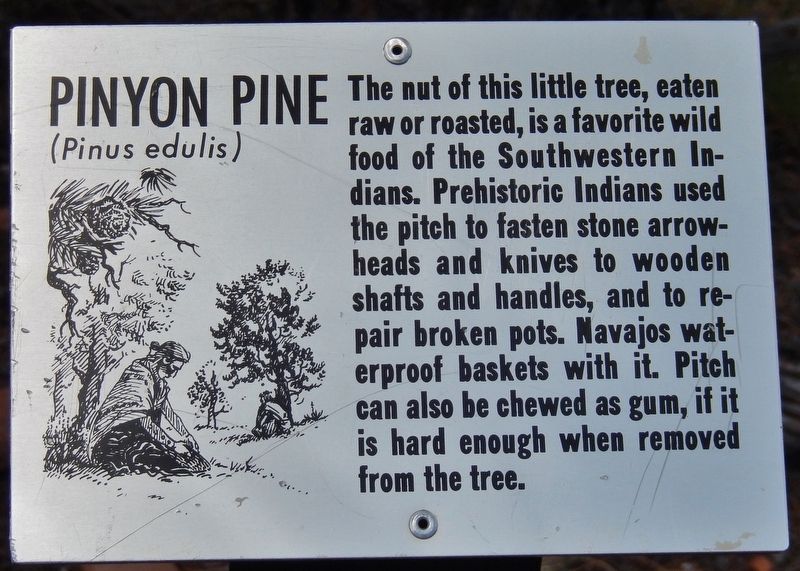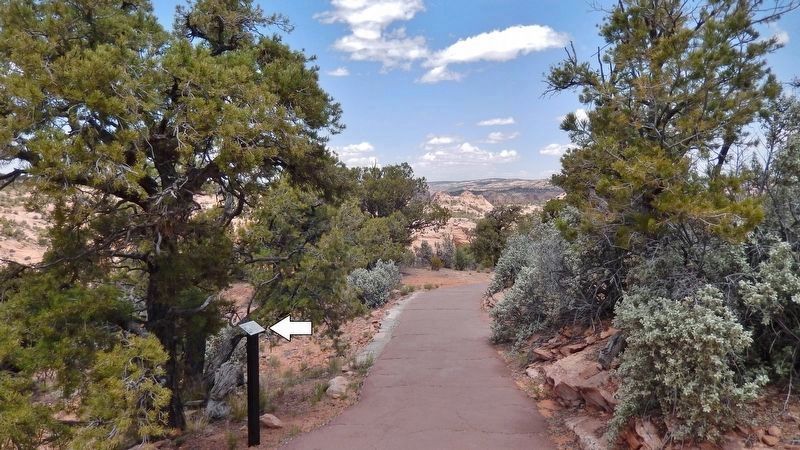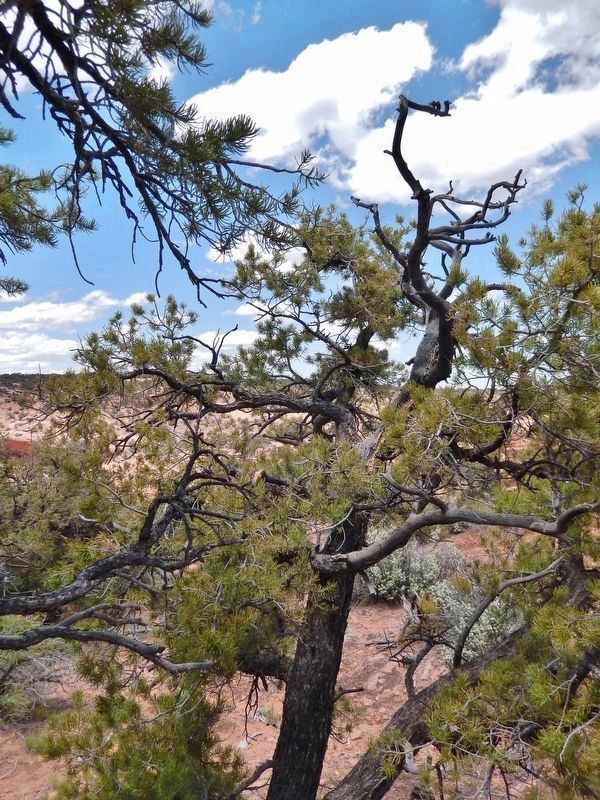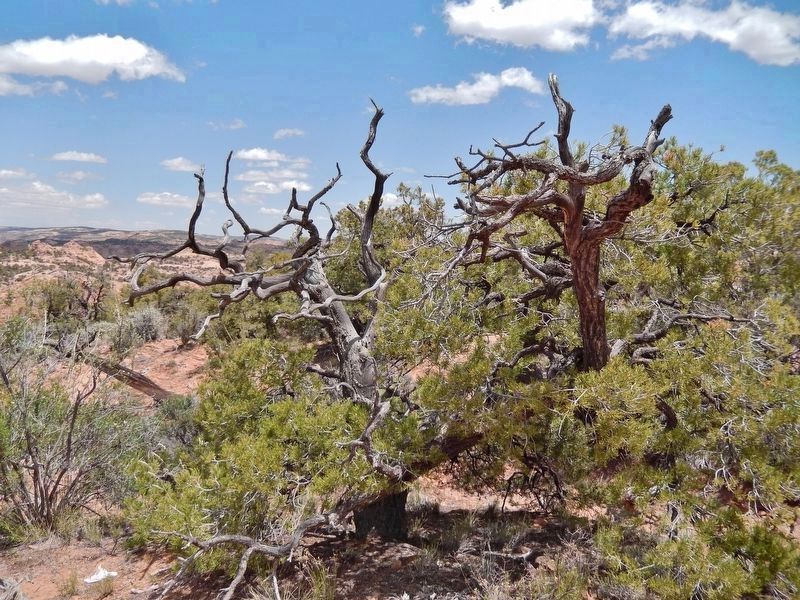Near Shonto in Navajo County, Arizona — The American Mountains (Southwest)
Pinyon Pine
Pinus edulis
Topics. This historical marker is listed in these topic lists: Anthropology & Archaeology • Native Americans.
Location. 36° 40.76′ N, 110° 32.183′ W. Marker is near Shonto, Arizona, in Navajo County. Marker can be reached from the intersection of Arizona Route 564 and County Route 221. Marker is located along the Sandal Trail, about 3/10 mile northeast of the Navajo National Monument Visitor Center. Touch for map. Marker is in this post office area: Shonto AZ 86054, United States of America. Touch for directions.
Other nearby markers. At least 8 other markers are within walking distance of this marker. Cliffrose (about 300 feet away, measured in a direct line); Roundleaf Buffaloberry (about 300 feet away); Broadleaf Yucca (about 400 feet away); Grizzlybear Pricklypear (about 400 feet away); Mormon Tea (about 600 feet away); Utah Juniper (about 600 feet away); Prehistoric Pioneers (approx. 0.2 miles away); Voices in the Canyon (approx. 0.2 miles away). Touch for a list and map of all markers in Shonto.
Related markers. Click here for a list of markers that are related to this marker. Sandal Trail, Navajo National Monument
Also see . . . Pinus edulis (Wikipedia). The edible seeds, pine nuts, are extensively collected throughout its range; in many areas, the seed harvest rights are owned by Native American tribes, for whom the species is of immense cultural and economic importance. Archaeologist Harold S. Gladwin described pit-houses constructed by southwestern Native Americans c. 400–900 CE; these were fortified with posts made from Pinyon trunks and coated with mud. (Submitted on January 13, 2020, by Cosmos Mariner of Cape Canaveral, Florida.)
Credits. This page was last revised on January 13, 2020. It was originally submitted on January 12, 2020, by Cosmos Mariner of Cape Canaveral, Florida. This page has been viewed 154 times since then and 15 times this year. Photos: 1, 2, 3, 4. submitted on January 13, 2020, by Cosmos Mariner of Cape Canaveral, Florida.



